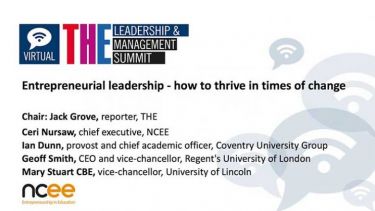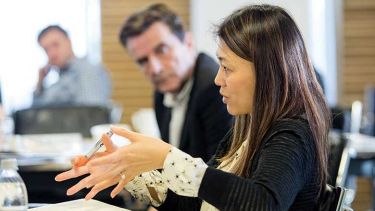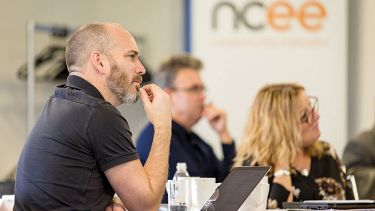
Despite directing investment and effort into lifelong learning, there are still boundaries between universities and other education providers. How can institutions foster an environment for fluid collaboration?
Students’ education was severely disrupted by the global pandemic, so the need for universities to work more closely with schools and further education colleges has never been more pressing. Many are already involved through sponsorship or partnerships, but boundaries between “ages and stages” remain stubbornly in place.
The National Centre for Entrepreneurship in Education (NCEE) has recently extended its entrepreneurial leadership programmes outside the university sphere, opening them up to leaders from further education and now to multi-academy trusts. Mary Stuart, emeritus vice-chancellor of the University of Lincoln and NCEE board member, makes the point that “education is education”. “You can have university students studying French for the first time,” Stuart says. “All people who work in education believe it can transform lives, so it shouldn’t matter if you’re a schoolteacher or a lecturer.”
Ian Dunn, NCEE chair and provost of Coventry University, argues that blurring these boundaries not only creates efficiencies but also increases innovation.
“In a constrained financial world for all of us, we need to find our points of commonality and opportunities for great educational service that go beyond those boundaries,” he says. Coventry University Group sponsors a group of sixth-form academies that operate nationally, and Dunn welcomes the opportunity to integrate the trust into university estates and teaching.
The University of Lincoln has built close partnerships with major local employers, schools and colleges, particularly in the food production industry. “We all have an interest in supporting [students], so our schools work with them on apprenticeships, we offer further education options on campus, as well as PhDs or research,” Stuart says. “To the businesses, they might need someone with a Level 2, or they might want a PhD researcher in food science. Working through employers is one of the simplest ways to navigate across those boundaries.”
Such collaborations form an important part of universities’ civic role as the economy rebuilds after the pandemic. “The ultimate purpose of this is that educational groups can reach more deeply into regional communities, looking at what we can offer employers,” Dunn says. In an ideal system, learners see a smooth progressionfrom one stage to another, even if they move between providers.
Stuart adds that this route might not be linear. “There’s a stigma that you have to get to the highest level, but sometimes your role demands you acquire knowledge at a different level,” she says. Offering microcredentials creates a “just in time” approach if someone needs to brush up on their line management skills, for example, or is managing a project for the first time.
University leaders must build skills that take them out of their comfort zone to embrace a more fluid education system, Stuart concludes. “Working with schoolteachers builds solidarity but also develops a sense of ‘we could try something new’. Entrepreneurial skills develop when people take a risk and try something different, and we often push boundaries if we’re working with someone from a different environment.”
Find out more about NCEE.




